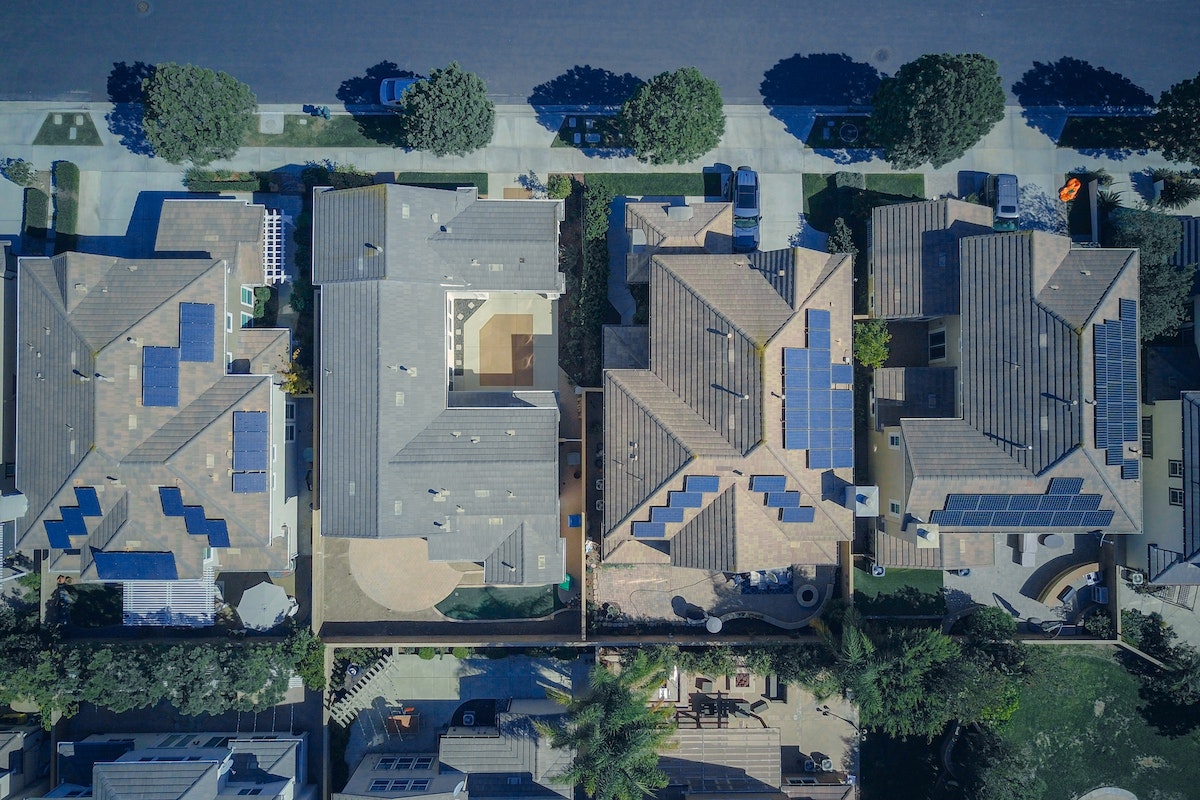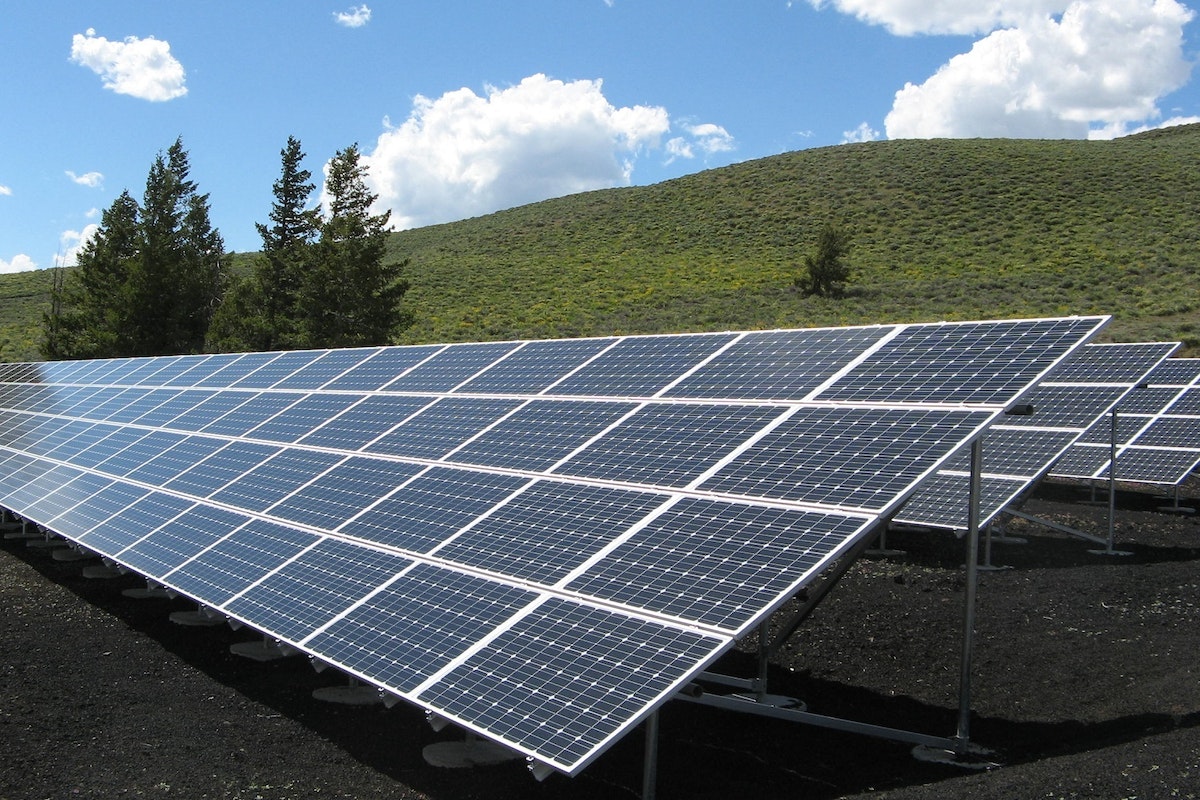In an effort to reduce greenhouse gas (GHG) emissions, many countries are forced to take drastic measures. For example, countries like Denmark have set electricity targets for each year in order to reduce carbon dioxide usage.
Fortunately, many countries have government programs to make adopting clean technology easier. In particular, solar energy may be your best bet as it can ultimately replace your costly electric bill with free solar power.
But how can you get free solar panels from the government?
In this article, we’ll explore everything you need to know on how to get free solar panels from the government. Keep reading to learn more!

Assessing Your Solar Needs
When it comes to assessing your solar needs in order to get free solar panels from the government, there are a few things to consider. First, you need to determine what type of system you are interested in. There are two basic types: grid-tied or off-grid.
Next, you must consider your roof size and roof orientation in order to determine how many solar panels your system would need. Additionally, you must evaluate what type of energy output you require, as well as the energy needs of your region.
Finally, consult with an installation professional to assess the viability of your system and ensure all local and state regulations are met. By taking the time to properly assess your solar needs, you can receive free solar panels from the government and enjoy the economic benefits of switching to renewable energy.
Understand Your Region’s Solar Incentives
Solar energy is becoming increasingly popular as people seek to reduce their carbon footprint and lower energy bills. The government has several incentives in place to promote solar energy adoption, including providing free solar panels to those who qualify.
Understanding the solar incentives in your region is the first step to getting free solar panels. Many states, cities, and utility companies offer financial incentives for renewable energy users, such as tax credits, low-interest loans, or rebates.
In addition, some solar providers may offer free or low-cost installation or solar land lease options for residential customers. Lastly, there are government-funded incentives, such as grants or discounted solar services, that may be available in certain areas.
Research your options and take advantage of any incentives available in your area. With the right information, you may be able to get free solar panels and start saving money on your energy bills.
Researching Your State Requirements
In order to acquire free solar panels from the government, one must research state requirements. Depending on the state, the materials, cost, and installation of the solar panels may be available from the state or local governments.
To start, visit the state energy office to find out what type of incentive is offered in your area. Some states offer incentives for installing solar panels, or utilities provide rebates for solar energy systems.
Once you have determined who is providing what incentive, look into the specifics of each program. Further research should include investigating requirements such as the household’s energy use, types of roof material, and if any additional materials are needed.
Though this process may be tedious, it is worth the effort when you get free solar panels from a government incentive!
Take Advantage of Tax Breaks and Credits
Residents should research the available tax breaks and credits available for federal, state, and local governments to see if solar power is eligible within their geographic area.
Several types of tax incentives, such as renewable energy tax credits and deductions, are available to help homeowners lower the costs of installing a solar system. Homeowners can also benefit from renewable energy credits and the sale of excess energy produced by the solar system.
These credits are often tradable with other utilities, so homeowners can benefit from both energy produced and the sale of any excess energy. Additionally, some states allow for net metering, which means the excess energy produced and sold generates credits that can be used to reduce electric bills.
Finally, many utility providers will offer solar rebates when customers install energy-efficient solar systems. It is crucial for homeowners to research the available options in detail and ensure they take advantage of every available incentive and credit.
Government Loan Programs for Solar Panel Installation
Government loan programs for solar panel installation provide an effective way to get free solar panels from the government. These programs are designed to provide interest-free loans to qualified homeowners who install solar energy systems.
To get this loan, applicants must meet certain criteria, such as having adequate income and good credit. To assist families who cant afford to pay for the installation, the government may offer subsidies in some areas.
The incentive program provides up to eighty percent of the cost of solar energy systems for homeowners. This can be used to install solar energy systems that will significantly reduce a households energy costs, and in turn, the homeowner will pay back the loan at no interest.
Explore Creative Financing Solutions
There are a few creative financing solutions to obtain government-subsidized solar panels for free. These solutions require research and creativity and should not be overlooked.
One option is to look into local, state, or federal government programs that specialize in energy conservation or renewable energy sources such as solar. These programs can provide incentives for the use of solar energy systems and may include subsidies or reduced-cost installation.
Other organizations or companies may also offer free solar panel programs to consumers who meet certain criteria. Additionally, leasing or financing programs provide attractive financing options with low monthly payments and little to no up-front costs.
While the programs vary, these creative financing solutions can be incredibly beneficial for anyone looking to take advantage of renewable energy sources without a hefty initial investment.

Consider Rooftop Leases and Power Purchase Agreements
A great way to get free solar panels from the government is to explore rooftop leases or power purchase agreements. Rooftop leases allow homeowners to install solar panels on their rooftops without incurring the cost of ownership.
In exchange for leasing the space, the homeowner pays a low monthly fee to the leasing company for the installation and maintenance of the system. Power Purchase Agreements (PPAs) are another way to get free solar panels from the government.
With a PPA, the rooftop owner purchases the power generated by the solar panels and sells it back to the utility company at a set rate. The utility company deposits the money into the homeowners account every month.
Both of these agreements can save homeowners money on energy costs while also helping to reduce their environmental impact.
Finding Installers for Your Free Solar Panels
The first step in finding installers for your free solar panels is to find out if you qualify for a government solar program. Depending on where you live, there are several initiatives and funding sources available to homeowners.
You should research online and contact your local government to see what is available to you. Second, you should contact multiple installers who have the experience and qualifications to install your panels.
Be sure to ask for references from past customers and get quotes from each company to compare prices and services provided. Lastly, consider the type of panel you want and the uses you will have for them. Here are the different types of solar panels to choose from:
Monocrystalline
Monocrystalline solar panels are considered the highest quality solar panels available. They are made with high-purity, single-crystalline silicon, resulting in higher efficiency than other types of panels.
In addition to higher efficiency, monocrystalline solar panels are rugged and reliable. They have a low risk of failure over the long term and can withstand extreme weather conditions.
Monocrystalline solar panels also require less surface area to produce the same amount of energy as other types of panels, so they can take up less space and are more aesthetically pleasing.
Although they are more expensive than other types, they may be more cost-effective in the long term. Monocrystalline solar panels are a great option for those looking for a long-term, reliable source of renewable energy.
Polycrystalline
Polycrystalline solar panels are made up of multiple smaller blocks of crystalline silicon material, each having its own uniform crystal structure. This type of panel is characterized by its darkened, speckled look, which is a result of the manufacturing process used to create them.
As a result of this manufacturing process, the silicon material used is less pure than the monocrystalline solar panels, which means that polycrystalline is expensive to produce relative.
Despite this, polycrystalline solar panels are widely used due to their lower cost and very good efficiency. They are also considered to have a better performance of power production during hot and cloudy days.
This makes them especially suitable for areas that experience intense daytime heat where efficiency matters more than initial investments.
PERC
When it comes to solar panel technology, PERC (Passivated Emitter Rear Cell) is a relatively new but increasingly popular type of panel. PERC technology provides increased energy efficiency, temperature tolerance, and better design flexibility than other types of solar panels.
PERC solar panels consist of two cells with a reflective material, a metal contact, and a passivating layer on the rear surface. This layer allows photons to be reflected back into the solar cell, leading to higher efficiency.
PERC solar panels also come with higher temperature tolerance, meaning they are less likely to be affected by high temperatures. Finally, the metal contact means these solar panels can be up to 40 percent lighter than standard solar panel designs.
All of this makes PERC solar panels a great choice for both residential and commercial applications.

Thin-Film Panels
ThinFilm Panels are one of the many types of solar panels available today. These panels are unique in that they have a thin layer of photovoltaic material on top of a substrate, such as stainless steel or glass.
The thin layer is made to be extremely resistant to UV radiation and other external factors. These panels have a higher efficiency than standard polycrystalline or monocrystalline solar cells, and they’re more flexible and durable than traditional options.
This makes them suitable for use in a variety of contexts, from roof installations to consumer electronics and portable solar generators. They are also very reliable, and their resistance to environmental elements makes them an excellent choice for areas where extreme weather is common.
Connecting with Federal & State Renewable Energy Programs
Connecting with Federal and State Renewable Energy Programs is the best way to secure free solar panels from the government. Many states and localities have special programs to help encourage residents to invest in renewable energy resources.
By researching online or contacting your local utility company, you can learn about the programs offered in your area. Some of these programs may include tax incentives, subsidized loans, solar rebates, or even free solar panel installation services.
Solar energy is one of the most reliable energy sources available, which makes it an attractive proposition for many homeowners and businesses. It is reliable, affordable, and, thanks to government programs, potentially free.
Connecting with these programs is the surest way to get free solar panels from the government. Get the best out of going green by researching how to clean solar panels.
Learn How to Get Free Solar Panels From the Government
In conclusion, how to get free solar panels from the government can benefit from free solar panels from the government! Electricity bill savings, government incentives, and environmental impact all contribute to a successful green energy transition.
To take advantage of the free solar panels available, apply for a home renewable energy incentive, and you too can get free solar energy for your home.
Did you find this article helpful? Check out the rest of our blog for more!